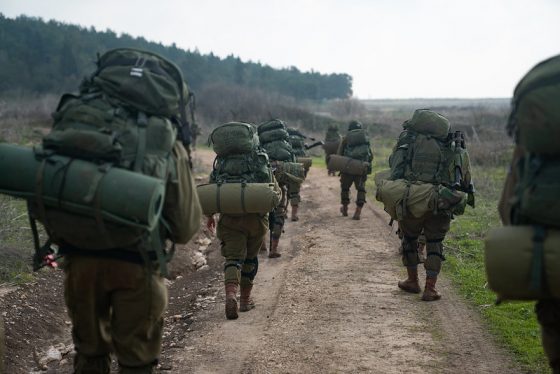BESA Center Perspectives Paper No. 1,482, March 13, 2020
EXECUTIVE SUMMARY: Combat in well defended built-up areas and in underground fortified facilities requires a large-scale order of battle quantitatively greater than anything known in the past. Meeting this challenge depends on the right integration of an elite, top-quality strike force with a large-scale quantitative mass at a medium level of quality. And while the IDF has been renewing and strengthening itself in those regards, when it comes to ground combat, where a quantitative mass is critical, a worrisome gap is widening.
Each year, amid budget deliberations, Finance Ministry officials demand that the IDF do some streamlining. The streamlining processes conducted in recent decades, which focused on the ground forces, led to cutback after cutback and reduced the order of battle to the point of weakening the army’s preparedness for war. When the IDF began eliminating brigades and divisions more than two decades ago, it suited the political and military echelons because it meant the IDF was indeed paring itself down and would be able to allocate more resources to the units that remained. In a familiar organizational dynamic, however, among the remaining brigades and divisions as well, a new gradation of quality emerged that later called for a further cutback.
The logic that guides this process is driven by a familiar methodological error: in keeping with a fundamentally sound principle used to run production plants and companies, IDF commanders are expected to carry out streamlining processes using managerial criteria that have not been adjusted to the uniqueness of a military organization. Whereas the main test of a business occurs in market competition that is ongoing and constantly developing, the main test of an army’s force buildup for war is war itself—which, as long as it has not begun, is not present in its full implications. Given the profound uncertainty about the possibly unprecedented nature and magnitude of the war, military force buildup requires substantial emergency supplies.
Risk management for an economic enterprise also requires planning to ensure that supplies will be available, but the proportions are very different. Accordingly, the IDF strategy document published by the previous chief of staff, Gadi Eizenkot, set out a guiding principle for force buildup:
The buildup of capabilities will entail creating or maintaining a critical mass. Apart from the importance of achieving qualitative and technological superiority, the quantity of the means available is of great importance. Quantity affects quality and flexibility of use. Mass, along with flexibility, is a way of coping with the uncertainty about the future challenges on the battlefield.
Evident here is the perennial dilemma between quantity and quality, especially in the ground forces. Unlike in the air force, where there is rapid flexibility in transferring aircraft from arena to arena, in the ground forces flexibility is cumbersome and depends critically on the quantity of the units. That is why the reserve forces were established: to enable a resource-strapped country to provide a reasonable response to an array of security threats with the necessary large-scale order of battle in time of emergency while also tending adequately to the other needs of Israeli society. Hence, after the War of Independence, the now-familiar idea emerged of permanently maintaining a standing army of limited size that relies on a large, rapidly available reserve force. Despite the many changes that have occurred since that time, this basic notion of ensuring a critical mass for ground forces is relevant today as well.
Keeping the IDF operatively flexible and available, particularly the ground forces, is more of a challenge today than during the past two decades. In each of the conflicts since the 1973 Yom Kippur War, the IDF has operated in only one arena where it could concentrate most of its forces. Given the reality of the threats now taking shape—with Hezbollah and Iranian forces in the north and Hamas in the south—along with the unprecedented accumulation of missile/rocket-fire threats to the Israeli home front, there is a growing likelihood of a scenario where the IDF will have to operate in two arenas at once. The need to focus combat on well defended built-up areas and on underground fortified facilities requires a large-scale order of battle that is quantitatively greater than anything known in the past. Meeting this challenge depends on the right integration between an elite, top-quality strike force and a large-scale quantitative mass at a medium level of quality. And while the IDF has been renewing and strengthening itself in those regards, when it comes to ground combat, which continues to require a quantitative mass, a worrisome gap is growing.
This is an edited version of an article published in The Liberal in February 2020.
Maj. Gen. (res.) Gershon Hacohen is a senior research fellow at the Begin-Sadat Center for Strategic Studies. He served in the IDF for 42 years. He commanded troops in battles with Egypt and Syria. He was formerly a corps commander and commander of the IDF Military Colleges.


